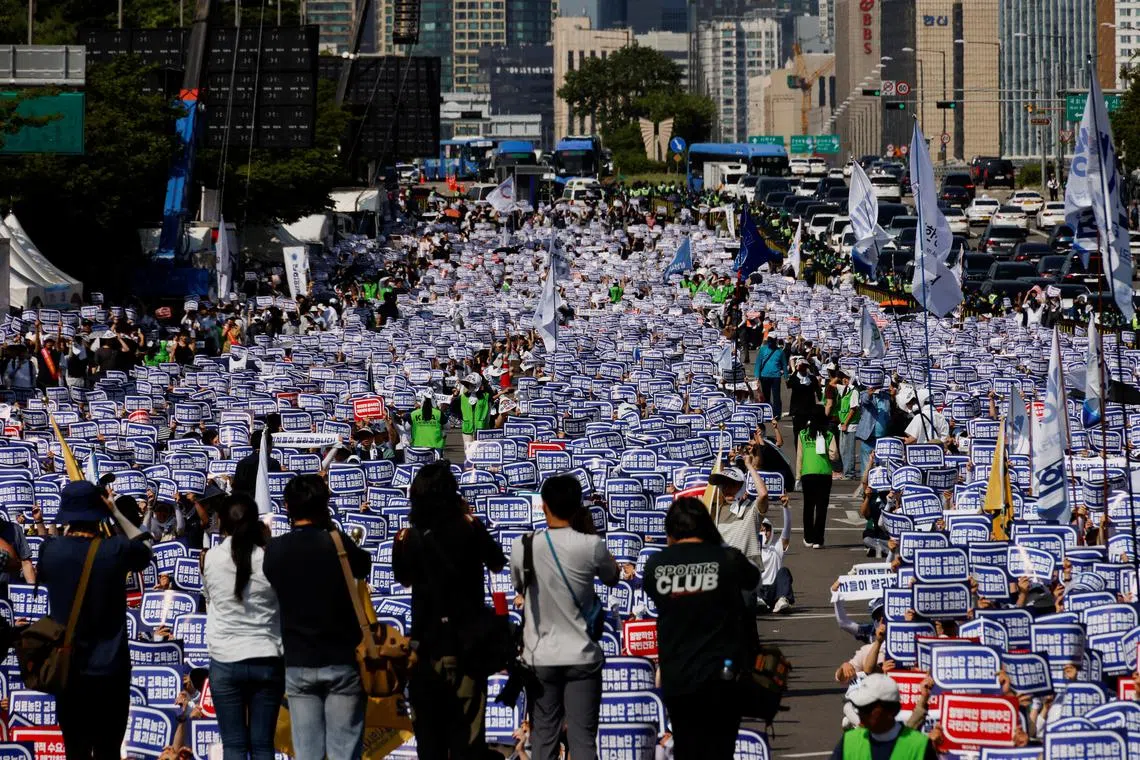South Korean doctors end 18-month walkout, bringing relief to hospitals
Sign up now: Get ST's newsletters delivered to your inbox

The strike began in February 2024 when more than 10,000 doctors walked off the job in protest of a government plan to more than double medical school admissions by 2035.
PHOTO: REUTERS
Follow topic:
SEOUL – South Korea’s trainee doctors began returning to hospitals on Sept 1, ending an unprecedented 18-month walkout that had left operating rooms short-staffed, procedures postponed and patient backlogs growing.
The strike began in February 2024
The proposal, initiated by former president Yoon Suk Yeol to ease a chronic shortage of doctors, sparked fierce opposition from physicians and medical students.
In March 2025, the government scrapped the plan
The students decided to end the strike after President Lee Jae Myung took office in June
Major hospitals – many of which had been postponing surgical procedures and appointments, and were struggling with staff burnout – quickly began recruiting returnees for a new residency term that started on Sept 1.
The Korean Intern Resident Association, which represents the trainee doctors, could not immediately comment when contacted by Bloomberg News.
Interim leader Han Sung-jon told training hospital chiefs last week that a “significant number” of residents would be back, thanking those who had stayed on to care for patients during the walkout.
The return of the trainees marks the end to one of the longest labour disputes in South Korea’s medical sector, during which doctors pushed for higher pay, better working conditions and more resources for hospitals still stretched thin after the Covid-19 pandemic.
South Korea has one of the lowest doctor-to-population ratios among developed nations – a problem set to worsen as the population ages.
The strike underscored those vulnerabilities, leaving military doctors and nurses to fill critical gaps.
Doctors say that simply expanding medical school admissions would lower the quality of training and drive down wages, without addressing the shortages in essential yet less lucrative specialities such as emergency and paediatric care.
Yoon’s push for raising the number of doctors initially garnered public support, but he was blamed for exacerbating the rift with stiff responses, with the number of resident doctors plunging to its lowest level in years. BLOOMBERG

